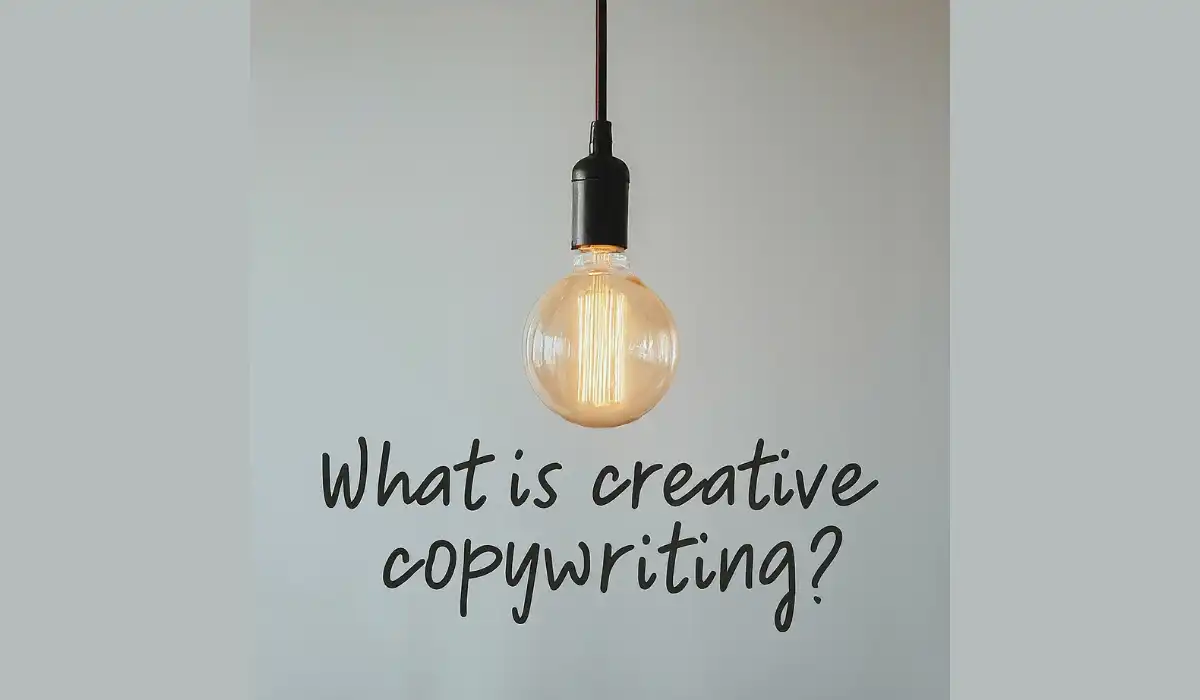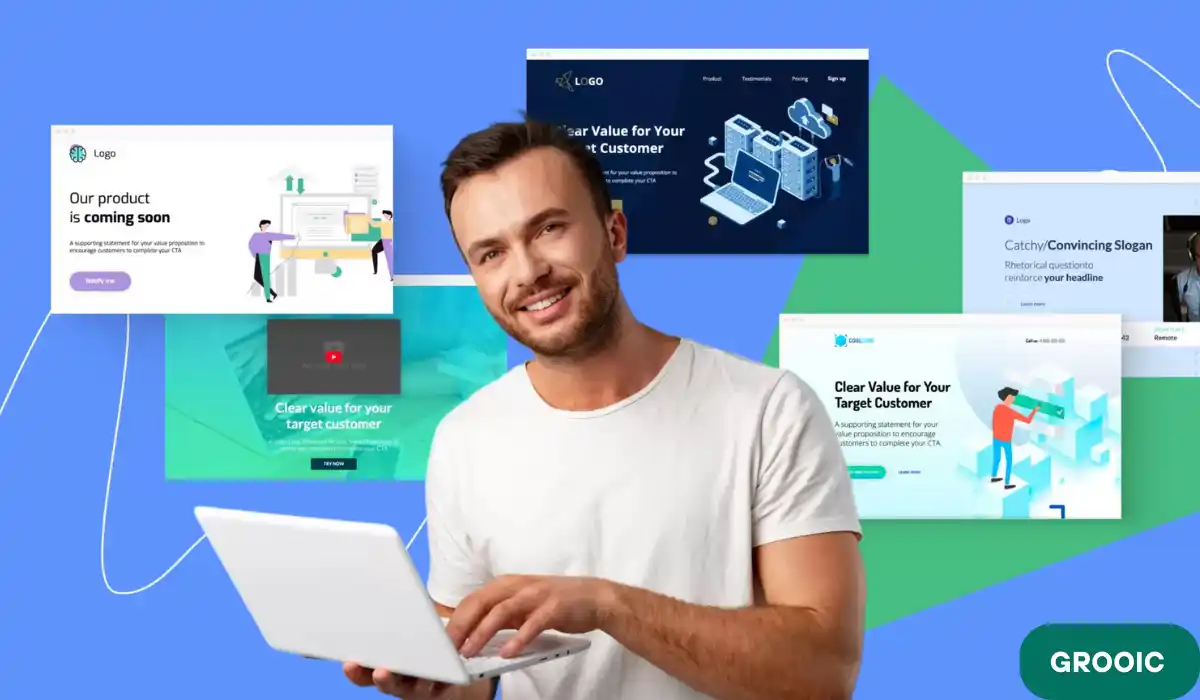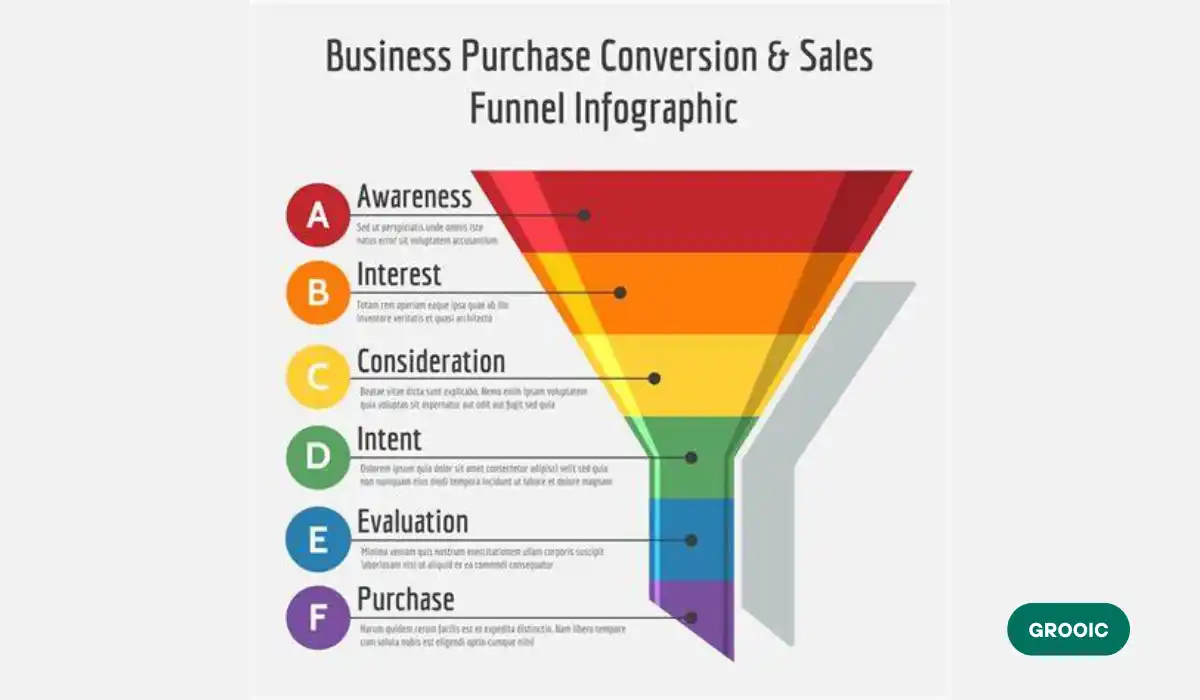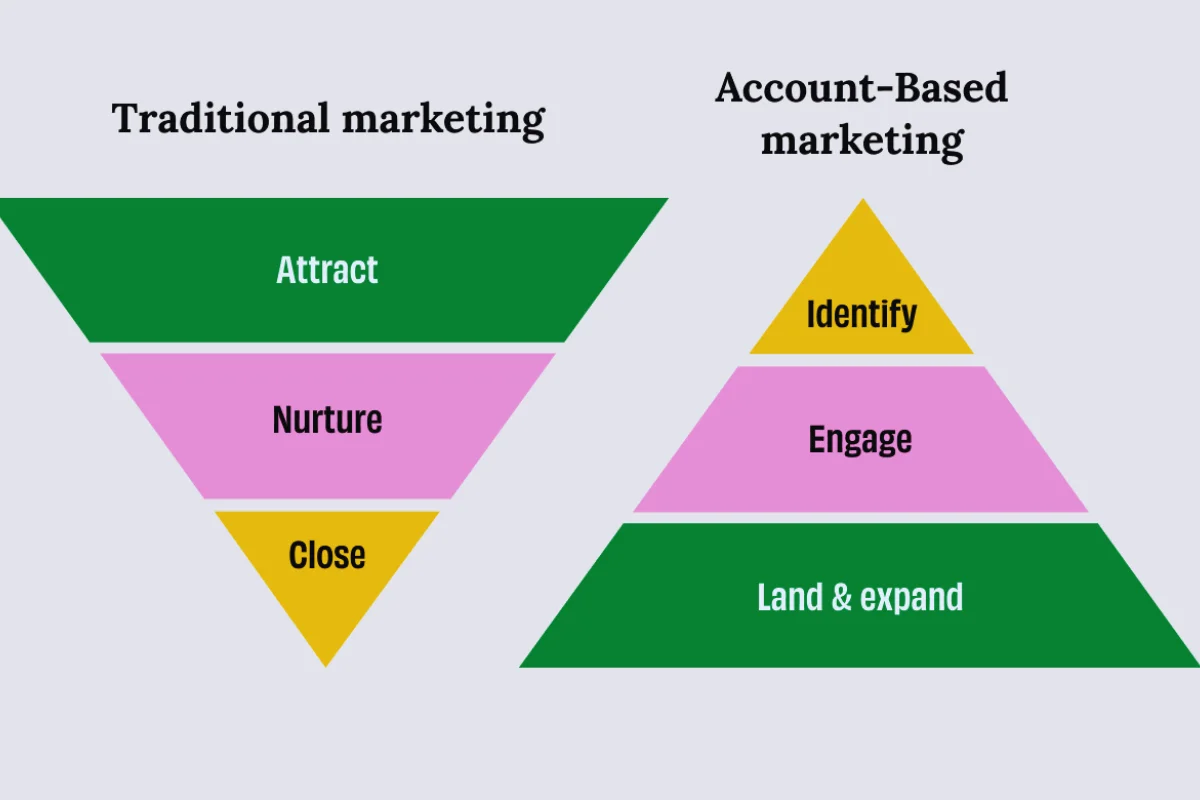Writing creative copy for better conversions is a must-have skill for any marketer. To get more engagement, creative copywriting is the thing for better conversions. Good storytelling, a strong call to action, and a clear tone are key to writing copy. They are essential tips for writing creative copy that gets more conversions.
Table of Contents
What is Creative Copywriting?
In this case, creative copywriting refers to that technique of attention-grabbing and persuasive content that will cause an end-user to act as expected Grooic LLC is the best platform to get the best copywriting.
- It’s beyond the transmission of information
- It involves imagination,
- Storytelling and
- Emotional triggers so as to connect with the readers.
Creative copywriting is imperative in,
- Advertising,
- Marketing and
- Branding.
Its main goal is to satisfy and motivate the reader. This could be to buy something or sign up for a service. This is all about what is copy in writing. Now let’s go deeper.
Consequently, effective creative copywriting not only prompts conversions but also helps in achieving business goals through a combination of qualities and strategic thinking. Here are some examples of creative copywriting effective power text copy or Examples of Good Copywriting:
Nike: “Just Do It.”
Apple: “Think Different.”
MasterCard: “There are some things money can’t buy. For everything else, there’s MasterCard.”
L’Oréal: “Because You’re Worth It.”
M&M’s: “Melts in Your Mouth, Not in Your Hands.”
Volkswagen: “Think Small.”
Red Bull: “Red Bull Gives You Wings.”
De Beers: “A Diamond is Forever.”
KFC: “Finger Lickin’ Good.”
Dollar Shave Club: “Shave Time. Shave Money.”
Here’s a table, summarising how copy skills help to copywrite a brand grow and gain popularity:
| Mechanism | Description |
| Building Brand Identity | Crafting a distinct voice and tone that reflects the brand’s personality, making it recognizable and relatable. |
| Engaging the Audience | Creating compelling content that captures attention and fosters a connection with the audience, encouraging interaction and engagement with the brand. |
| Driving Conversions | Persuasive copywriting leads to higher conversion rates by motivating the audience to take desired actions, such as making a purchase or signing up. |
| Enhancing SEO | Well-written copy with relevant keywords improves search engine rankings, increasing visibility and attracting more potential customers. |
| Communicating Value | Effectively conveying the unique benefits and value propositions of a product or service, helping to differentiate the brand from competitors. |
| Building Trust and Credibility | Consistent, high-quality content establishes the brand as an authority in its industry, building trust and credibility with the audience. |
| Fostering Customer Loyalty | Engaging and informative copy helps to nurture relationships with existing customers, encouraging repeat business and long-term loyalty. |
Understanding Your Audience
The most important thing to consider when planning communication and marketing is the recognition of the audience involved. You can make your message resonate more with them by understanding their needs, tastes, and discomforts.

In other words, this understanding enables you to communicate in relation to different needs and cares among people. Market research, customer surveys, or social listening are some of the ways that can be used in understanding one’s audience whereby they take time and effort but create strong ties among customers thus leading to high involvement which eventually results in higher conversion rates and loyalty levels.
What are the 3 C’s of copywriting?
Copywriting’s 3C’s are,
- Clear,
- Concise and
- Compelling.
The message is easily understood by the audience through clear copy. Good copy passes on the message with a few words. It avoids fluff. The reader is arrested by a compelling copy and driven to action eventually. Effective communication is about engaging and achieving goals. Hence, to do this, these three principles must be followed.
Popular Copywriting Formula
Popular Copywriting Formulas are a light in the competitive marketing scene. Attention spans are low and consumers have many choices. They help to bring some order into the creative process making sure that every word counts.
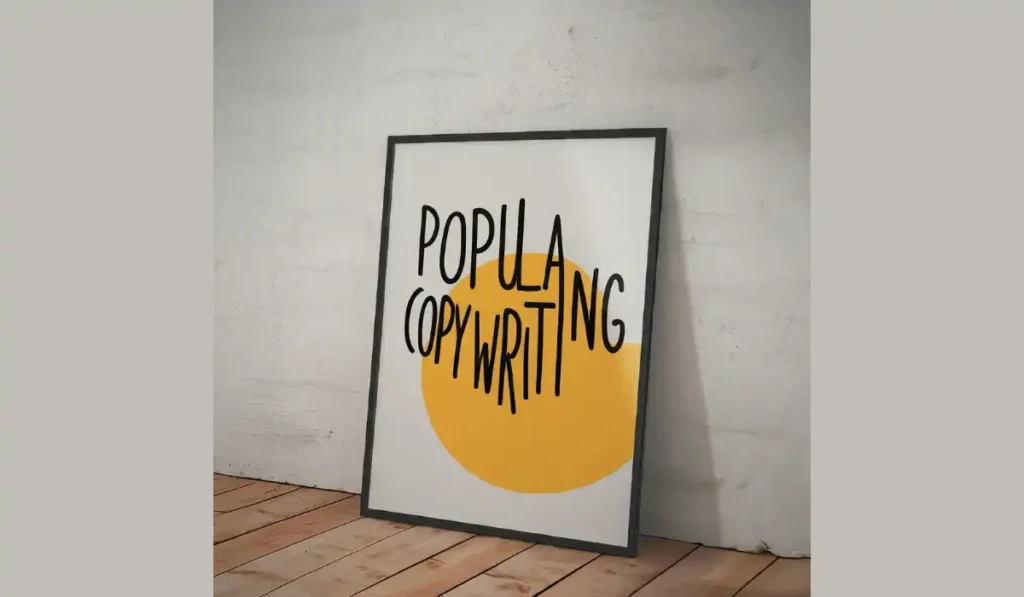
For instance, by using formulas like AIDA or PAS, marketers can strategically get their audience’s attention. They create a desire for their products and services and prompt the audience to take action. More info is in the given boxes,
| Formula Name | Meaning | Usage and Effectiveness |
| AIDA | Attention, Interest, Desire, Action. | AIDA guides readers through a structured journey: capturing attention, generating interest, building desire, and prompting action, leading to higher conversions. |
| PAS | PAS addresses the reader’s problem, agitates it to create urgency, and then presents the solution, offering relief and positioning the product/service as the answer. | PAS addresses the reader’s problem, agitates it to create urgency, then presents the solution, offering relief and positioning the product/service as the answer. |
| 4Ps | Picture, Promise, Proof, Push. | 4Ps creates a vivid image (Picture), makes a compelling Promise, offers Proof through testimonials or statistics, and Pushes the reader towards action through urgency. |
| STAR | Situation, Task, Action, Result. | STAR highlights the customer’s initial situation, the task or challenge they faced, the action taken (often involving the product/service), and the positive Result achieved. |
| BAB | STAR highlights the customer’s initial situation, the task or challenge they faced, the action taken (often involving the product/service), and the positive result achieved. | BAB starts with the customer’s situation Before using the product, illustrates the positive change After, and then Bridges the gap, showing how the product facilitated it. |
| FAB | Features, Advantages, Benefits. | FAB outlines the product’s Features, the Advantages they offer, and the ultimate Benefits to the customer, focusing on what the customer gains from using the product. |
| 6-Point | Who, What, Why, Where, When, How. | 6-Point ensures comprehensive coverage by addressing the key questions the customer might have about the product/service, fostering understanding and trust. |
| Problem-Agitate-Solve | This formula identifies the reader’s problem, exacerbates it to create urgency and discomfort, and then offers the solution as the relief, positioning the product as indispensable. | The Four U’s ensure copy is Useful to the reader, creates Urgency to prompt action, highlights Unique selling points, and is Ultra-specific, leaving no room for ambiguity. |
| The Four U’s | Clear, Concise, Compelling, Credible. | The Four U’s ensures copy is Useful to the reader, creates Urgency to prompt action, highlights Unique selling points, and is Ultra-specific, leaving no room for ambiguity. |
| The Four C’s | The Four U’s ensure copy is Useful to the reader, creates Urgency to prompt action, highlights Unique selling points, and is Ultra-specific, leaving no room for ambiguity. | The Four C’s ensure copy is Clear in its message, Concise to maintain reader interest, Compelling to drive action, and Credible to build trust and credibility with the audience. |
That said, these formulas streamline communication. They increase the impact of copy. They also improve their chances of converting in a crowded market.
Tips-1: Grab Attention Instantly through Organised Headline
In the twenty-first century’s rapid world, it is harder than ever to capture attention. The headline of your piece acts as the entrance to the content which makes it necessary to capture the readers’ attention immediately.
First, find out who your audience is and give them a headline that can target their needs or desires directly. You can stimulate curiosity in your audience by using power words while intriguing questions or brave assertions could also work well.

Say only what is essential and focus on your message’s strongest point.
By effectively organizing your headline, you will be able to break through the noise and leave an unfading impression behind at first glance, opening doors for more involvement.
Conversion Rate Optimization (CRO) is the process of improving your website or landing page experience to increase the percentage of visitors who complete desired actions, such as making a purchase, filling out a form, or subscribing to a newsletter.
Tips-2: A/B Testing to Optimise Your Copy for Better Results
A/B testing helps to optimize copy and produce better outcomes. By comparing these two versions, it is possible to establish what your audience will identify with more.
It allows you to try various angles like the headline, call-to-action, or even the wording in order to know if one will generate higher rates of engagement or conversions than the other.
This can enable you to find out what makes your audience take action thereby making you adjust your copywriting strategy accordingly over time. Such an iterative process improves communication efficiency and ensures that audience preferences are fully addressed thus enhancing marketing performance in general.
CRO tools, such as A/B testing platforms and heat mapping software, empower marketers to analyze and optimize their websites for improved user experiences and higher conversion rates.
Sales Copy Samples
Sample 1:
Headline
“Make Your Mornings Great with Our Great Coffee Blend!”
Body
Are you tired of tardy mornings and dull energy?
Bid farewell to lackluster coffee. We now bring to the market the best coffee blend that was made with great care for your morning experience. Every taste is a mouthful of rich flavors surrounded by an energetic jolt of caffeine to revive those senses and motivate a busy day ahead.
Don’t accept plain old coffee, know how extraordinary it can be. Buy it today and learn what we mean.
Call to Action
‘Shop Today and Refresh Your Mornings!’
Sample 2:
Headline
“Your Potential through our Fitness Program!”
Body
Looking for more?
We present you with the only complete fitness program that moves you forward like none other has done before. Personal workouts are available, as well as professional advice and support in the form of ongoing assistance, which will help you succeed in anything you want.
Be it weight loss, muscle gain, or improved health. Our program is maintained specifically for that need. Don’t wait anymore, get started on reaching your full potential today.
Call to Action
“Join Now and Begin Smashing Goals!”
Tips-3: Techniques to Boost Conversions
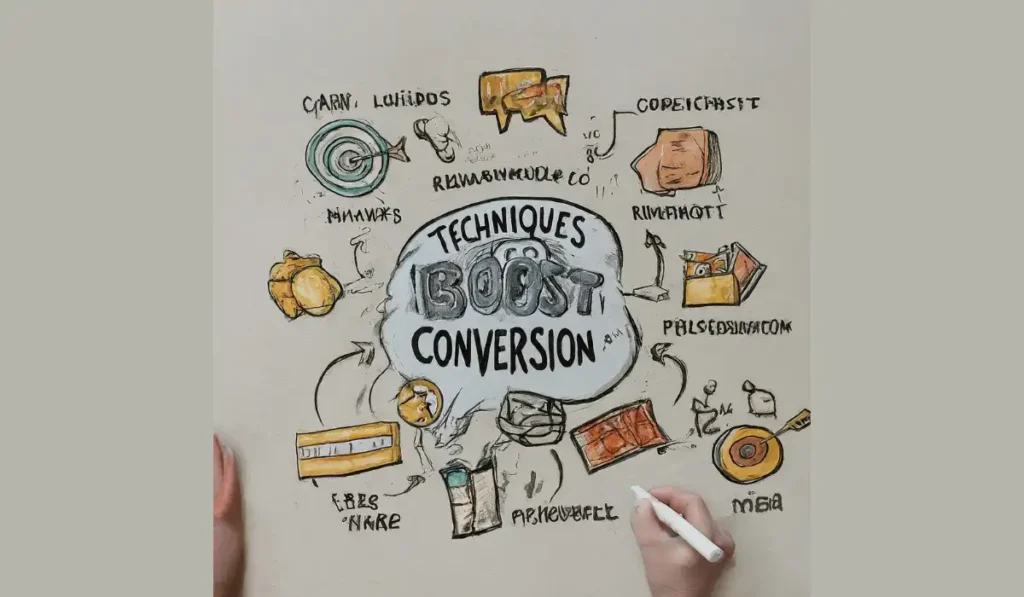
Here’s a brief explanation of each technique to boost conversions:
- Use phrases like “Sign Up Today” or “Buy Now” to give your users a precise call to action.
- Examine different versions of elements such as headlines and CTAs to understand which have higher conversion rates, which we can call A/B testing.
- Use time-sensitive words or low-stock notices to encourage visitors who come upon your site to take quick action.
- Show testimonials/ reviews of previous customers on the website
- Avoid convoluted messaging and communicate well: Keep it simple, and explain the benefits of the offer so that the user does not misunderstand things.
- Increase the probability of conversions by improving website performance: Enhance site speed and navigation for a smooth user experience.
- Provide an engaging experience by tailoring your messaging and offers according to the individual’s preferences and behaviors.
- Motivate potential customers with discounts or free offers towards signups or purchases.
- Enhance customer engagement through high-quality images or videos demonstrating what you offer creatively.
- Alleviate any doubts regarding the credibility of your site by displaying trust badges, security certificates, etc.
Tips-4: SEO Copywriting
SEO copywriting refers to the strategic process of writing content that is optimized for search engines and still interesting to human beings.
By incorporating related keywords, meta tags, and other SEO best practices into your content, you will be able to increase visibility and ranking in search engine results pages (SERPs).
Nonetheless, SEO copywriting is more than just stuffing keywords. It concentrates on creating good quality information that is helpful to your target market.
When you strike a balance between readability and SEO, you will be able to draw more organic traffic to your site, enhance user experience as well as achieve business objectives at last.
Tips-5: Use of Power Words to Increase Engagement
In the domain of copywriting, employing power words strategically is like using a potent weapon. These are selected adroitly. They,
- Draw readers’ attention,
- Stir emotions and
- Prompt actions.
Your copy gets more engaging with your target audience. Hence, its efficacy is enhanced greatly if it includes power words.

What Are Power Words?
Power words are effective elements in writing that trigger strong emotional reactions or create clear mental pictures in the reader’s mind. Such language has the ability to,
- Motivate,
- Stimulate,
- Convince or
- Move people towards action.
The reason for their effectiveness is that they appeal to deep-seated human wants fears and wishes. As such, these are very effective mechanisms of influencing behavior.
Creative copywriting examples of power words include:
- Exclusive
- Transformative
- Irresistible
- Guaranteed
- Revolutionary
- Discover
- Unleash
- Sensational
- Essential
- Empower
Why Do Power Words Increase Engagement?
Impact on emotions: Emotional impact is generated by power words that cause the reader’s feelings and this keeps them more interested in reading. This will create a stronger bond with readers through emotions of,
- Desire,
- Curiosity,
- Fear or happiness.
Catchy titles: Power words can catch the attention of readers while drawing them into a copy. Their appeal is strong enough to stand out from many others hence it ensures your message doesn’t go unnoticed and remains in peoples’ minds.
Persuasive language: Power words have the ability to direct people towards what they want to hear so that it can influence their decisions. These words may as well be used to change behavior and increase sales such as,
- Buying a product,
- Signing up for a newsletter or
- Clicking on an internal link.
To make copy memorable, and impactful use powerful keywords: Strong emotional reactions are likely to create memorable content that resonates with readers which are more likely to be read and get responses.
How to Incorporate Power Words Into Your Copy
Identify Your Readers: Determine what your target audience wants, is afraid of, and what drives them so that you will be able to select power expressions that resonate with them.
Use Them Sparingly: Power words can have a great impact, yet they lose their force when used too often. Use them wisely to bring out the most important ideas or create emotions.
Emphasise Benefits: The use of power words, while describing the benefits of your product or service, will give more power to it making them more appealing and irresistible to your audience.
Test and Iterate: Test different power words through A/B testing and optimize copy for better performance
Remain Genuine: Even as you apply some power words in your writings, endeavor to keep it real. Always go for those terms that portray the true picture of your product.
Copying it engages readers. It also drives them to take action. So, it can result from using these words. Furthermore, this Copyblogger guide adds more information. It has examples of using power words in copywriting and ways to do so.
Tips-6: Data and Analytics in Improving Your Copy
In the present day, data-driven society, marketers who are prospering know very well how data and analytics play a decisive role in their strategies and campaign optimization. For copywriting purposes,
- Incorporating data and analytics significantly boost the efficiency of the process by adding insight into audience preferences,
- Behaviors and trends.
Copy that is more targeted, personal, and effective can be created by marketers if they understand how to use data effectively when creating it so as to appeal to their intended audiences thus encouraging them to take the desired action.

Understanding Audience Preferences
One of the major advantages of employing data and analytics in writing promotional materials is that it provides an opportunity to learn more about readers’ tastes.
- When marketers study demographic details,
- Search behaviors and engagement metrics,
- They can observe some regularities or tendencies that show what is most popular with their target audience.
It allows them to modify their copy towards closer adherence to audience preferences so as to increase the chances of capturing attention and stimulating action.
For example, if data reveals a particular demographic segment enjoys funny ads, marketers could consider including more jokes in their copy content so as to resonate better with this group of people.
On the other hand, when data suggests another segment favors straightforward information-oriented pieces of writing. A marketer can change his tone and wording too.
Hence, such an approach ensures that efforts done in copywriting are well-targeted leading to increased involvement and conversion levels.
Personalization and Segmentation
Data and analytics also allow for personalized and segmental advertising copy. By using information like,
- Customer past purchase records,
- Browsing patterns and
- Demographics marketers can come up with well-honed copies highlighting individual customer requirements.
Apart from improving customer experiences through relevant and timely content delivery, personalized copywriting also boosts conversions.
In a study conducted by Epsilon, they found that 80% of consumers are more likely to buy if they personalize their content.
On the other hand, segmentation divides your audience into different groups based on similarities or behaviors. Marketers can therefore provide more relevant messaging to each group by practicing audience segmentation during their copywriting process making it more targeted and impactful in every aspect.
(Source: HubSpot – The Power of Personalization: How to Grow Your Business With Data-Driven Marketing)
Testing and Optimization
In addition, data and analytics form a crucial constituent of trying out and refining the writing of ads. For illustration, marketers can perform A/B tests to compare different versions of their copy in terms of engagement, conversion rates, and other vital measures.
The process involves creating more than one piece of copy. Then display each to different sections of your audience. By measuring the performance level for each variation and analyzing the results.
The marketer can know which elements are highly effective in order to make informed decisions while optimizing future campaigns.
For example,
- Marketers may test out different headlines,
- Calls-to-action or messaging strategies to distinguish what resonates best with their audience.
Through continuous testing and refining of copywriting supported by data as well as analytics will improve over time leading to more successful and impactful campaigns.
Predictive Analytics and Future Trends
Consumer trends can be concluded from data and analytics, enabling marketers to expect forthcoming changes in the marketplace. Marketers may also use predictive analytics to examine historical data. Thus identifying patterns and emerging trends that could mean opportunities or challenges.
For instance, retailers need predictive analytics to forecast demand for products they have traded before as well as track market developments.
Thus, marketers have a chance to modify their copywriting strategies in order to maximize on any new opportunities or reduce potential risks.
Marketers can also use data and analytics to find out more about changing customer preferences, industry trends, and competitive environments. As a result of this fact, marketing experts are able to vary their advertising strategies according to the prevailing market dynamics.
FAQs
Are there any common mistakes I should avoid when writing conversion copy?
Focusing too much on features rather than benefits for the audience. Neglecting to address objections or concerns that may prevent conversion.
Using generic or clichéd language that fails to resonate with the target audience. Overcomplicating the message or failing to communicate clearly and concisely. Ignoring the importance of a strong call to action directs the reader on what to do next.
How can I measure the success of my conversion copy?
Track conversion rates. They measure how well your copy drives desired actions.
Analyse engagement metrics. These include click rates, time on the page, and bounce rates. They gauge audience interest and interaction. Do A/B testing. Compare different copies to find which is better.
Isn’t a good copy just about being clear and concise?
Clarity and conciseness are important. But, creative elements like storytelling, emotion, and persuasion make copy more effective.
Creativity adds depth to writing. It captures attention and spurs action beyond just clarity.
Why is creative copy important for conversions?
Creative copy grabs attention and engages the audience, increasing the likelihood of conversion.
It differentiates your brand, making it memorable and compelling. Creative copy builds an emotional connection with the audience, driving action.
What exactly is conversion copy?
Conversion copy is written to persuade. It is meant to get readers to take a specific action, like making a purchase, signing up, or clicking a link.
It focuses on motivating readers. It urges them to change from passively watching to actively joining.

